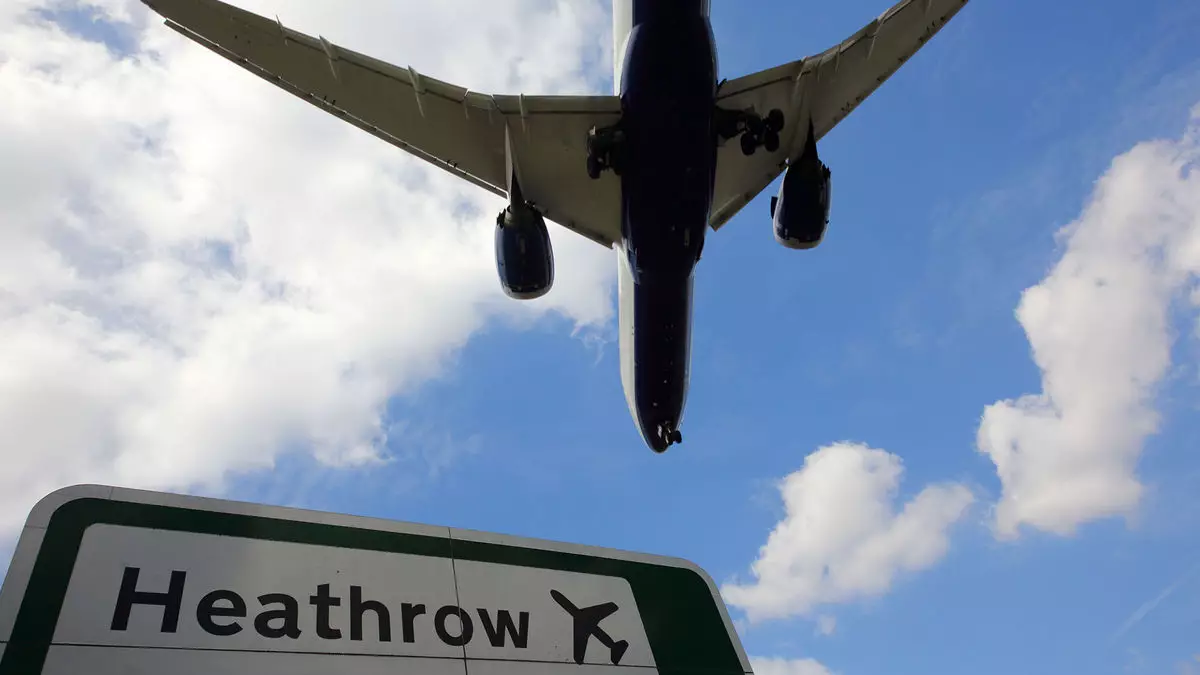On Friday, August 18, 2023, the operations of London Heathrow Airport came to an abrupt halt due to a severe fire and subsequent power outage that rendered it inoperable for a significant portion of the day. As Europe’s busiest airport and a major global hub, this incident had far-reaching implications for travelers from various points across the globe, causing a ripple effect that transcended borders. In a notification plastered on their website, airport authorities communicated a significant shift: „Following an earlier power outage, Heathrow is now safely able to restart flights.“ Yet, the declaration of safety was juxtaposed against the reality of a drastically reduced operation. This contradiction highlighted the crux of the issue — an airport resuming operations in a significantly compromised capacity while prioritizing the crucial repatriation and relocation of stranded aircraft.
Airlines and the Repercussions
The fallout from this closure was particularly harsh for British Airways, who had arranged around 670 arrivals and departures at its Heathrow base for the day of chaos, including a substantial number of U.S. flights. BA’s chief, Sean Doyle, could only express regret in a poignant video message, acknowledging the immense difficulty that such an incident imposes on both travelers and operational logistics. The clawback to normalcy, he noted, would not be instantaneous. Aircraft that had previously been diverted would need to be repositioned, and flight crews would require rescheduling — all of which signaled that this disruption would echo well into the future.
While British Airways faced a considerable challenge, other airlines expressed optimism about resuming closer to normal operations. American Airlines, which had 20 Heathrow-bound flights shelved on Friday, moved swiftly to reassure travelers that they would recommence operations as soon as feasible. Similarly, United Airlines commented on its intention to operate on Saturday, despite facing turmoil the evening prior when multiple flights were forced to return to their points of origin or seek other landing grounds. These statements illustrated a divided landscape — while some airlines anticipated a swift recovery, others braced for a prolonged aftermath of the disruption.
Collaboration Amidst Chaos
Amid the chaos, the role of seamless collaboration among airlines and airport authorities emerged as a crucial factor. Delta Airlines, for example, managed effectively to re-accommodate passengers who were either on connecting flights or destined for Heathrow. By facilitating travel to alternative European hubs like Amsterdam, they countered the disruption, ensuring that the situation did not devolve into complete disarray for all travelers involved. This adaptability is essential during operational crises, underlining an important takeaway about the need for flexibility in travel logistics.
The operational prowess demonstrated by multiple airlines amidst adversity raises an interesting question: How can aviation authorities preemptively fortify resilience in the face of potential emergencies? Learning from this debacle could entail a reevaluation of existing emergency frameworks and the creation of robust contingency plans aimed at minimizing disruption across the industry.
Heathrow’s Central Role in Global Aviation
Heathrow Airport is often celebrated as a pivotal cog in global travel, both as a central connecting hub and a significant entry point into Europe. The recent calamity reaffirmed its importance but also cast a spotlight on its vulnerabilities. As a hub that hosted 669 inbound flights on a Friday, the closing of its runways disrupted not only national but international travel, making it clear: an incident at Heathrow sends shockwaves across continents, impacting millions of lives and travel itineraries.
As travelers not only from the UK but from the globe awaited their fate, many were left grappling with uncertainty. The extent to which such disruptions ripple through the logistics of aviation illuminates the interconnected dynamics of air travel today. The reliance on a single hub like Heathrow becomes a double-edged sword; its significance in facilitating travel cannot be understated, yet the risks of its malfunction are equally pronounced.
Through this lens, it is essential to question whether travel infrastructures worldwide are robust enough to withstand unexpected challenges. A reevaluation might suggest a pressing need to diversify critical air travel hubs to mitigate the severe implications of disruptions in significant airports like Heathrow.
The chaos at Heathrow became a window into both the vulnerabilities and resilient responses within the aviation industry, reinforcing that every crisis, while challenging, can also serve as a catalyst for critical reflection and ultimately, evolution in aviation’s operational protocols.


Napsat komentář